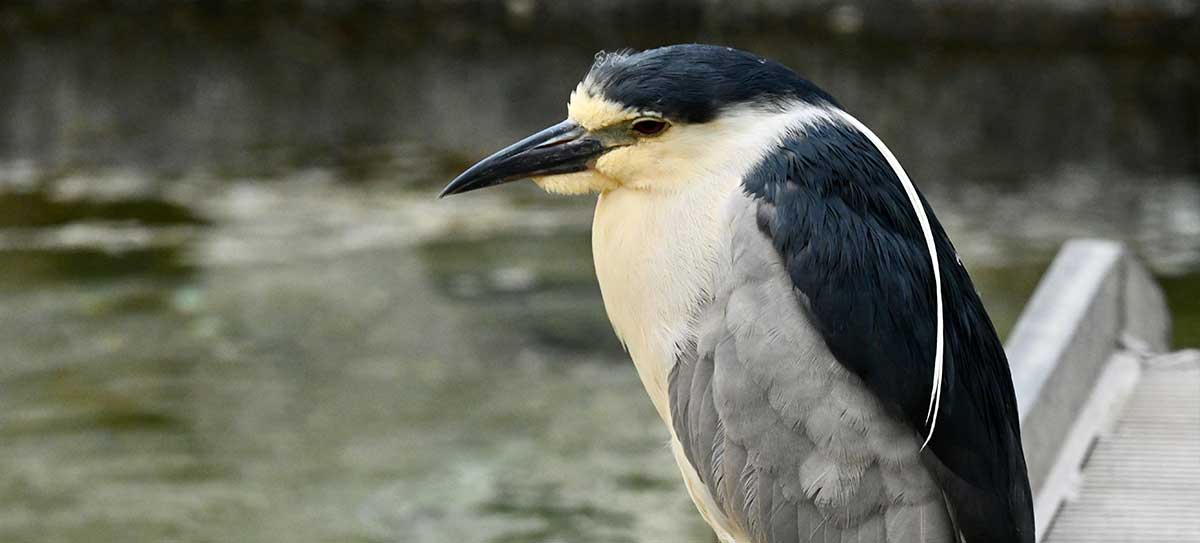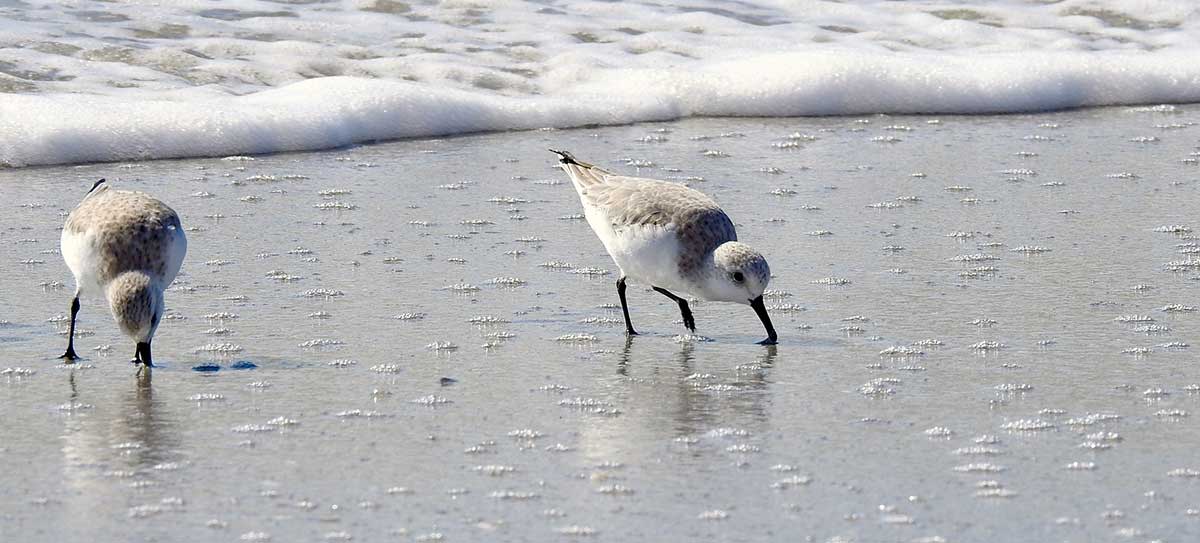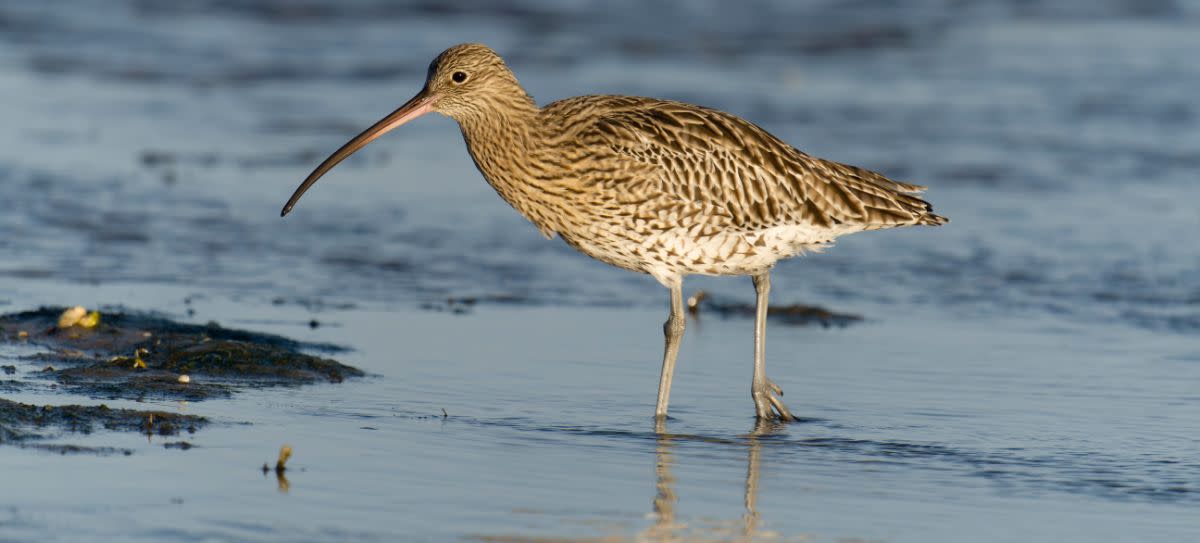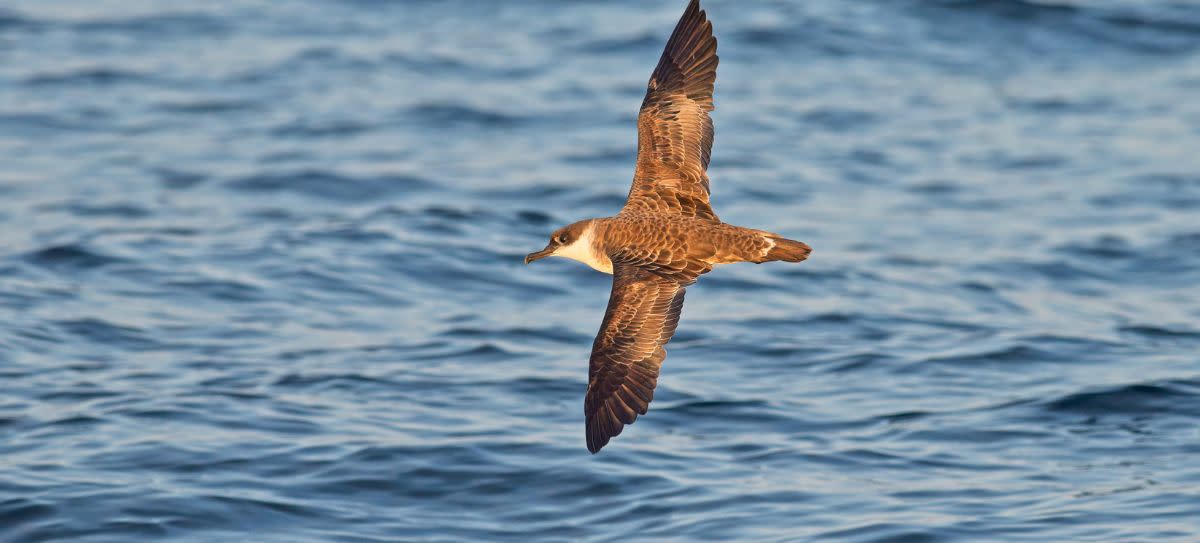Share the Shore with Pismo Beach Seabirds
Pismo Beach is a valuable nesting ground and habitat for many seabirds on the Central Coast of California. Many of our coastal seabirds live and breed along the coastline in sandy, sparsely vegetated areas and their eggs are camouflaged to remain hidden from predators. Often when a seabird is disturbed, it will abandon its nest, leaving the eggs vulnerable to predators, the blowing sand, and the cold. A kite flying overhead can look like a predator and can keep an adult seabird off the nest for long periods of time, decreasing the number of chicks that hatch. Keep your dog on the leash, because dogs may catch and scatter seabirds, causing physical harm and stress. It is extremely vital to stay out of nesting areas. Some of these protected areas may have been fenced off by State Parks staff to protect the birds and eggs from humans and predators, including coyotes, racoons, and skunks.
By observing seabirds calmly, respecting their space, and not chasing and harassing them, these birds can go about their activities naturally. We must not feed the birds; let them feed on their own diet. Additionally, dispose of trash in the proper receptacles or take it with you. Seabirds and other creatures could eat trash, which can make them sick, and/or get tangled in garbage, which can cause death.
Please “share the shore” to help protect the natural environment. Remember, when a species goes extinct, it is gone forever! We are privileged stewards of the beach and its inhabitants. Protect your beach and the plants and animals that use it. Most importantly, share your knowledge with friends and family–get the word out. We can make a big difference in seabirds’ survival!
American Coots (Fulica Americana)
 American Coots are vocal, gregarious members of the rail family. American Coots resemble small ducks and are plump medium sized diving birds with rounded heads and sloping bills. Coots are dark-gray to black birds with a bright-white bill and forehead; some have a small patch of red on the forehead. Coots have a very short tail, shorts wings, and legs are yellow-green with very large feet that appear oversized for their bodies. Because of these feet, they walk rather than waddle like a duck. To fly, Coots need a long running takeoff to become airborne. Both sexes are 15.5 to 16.9 inches long (39.4-42.9 centimeters), weigh 21.2 to 24.7 ounces (600-700 grams), and have a wingspan of 23 to 25 inches (58.4-63.5 centimeters).
American Coots are vocal, gregarious members of the rail family. American Coots resemble small ducks and are plump medium sized diving birds with rounded heads and sloping bills. Coots are dark-gray to black birds with a bright-white bill and forehead; some have a small patch of red on the forehead. Coots have a very short tail, shorts wings, and legs are yellow-green with very large feet that appear oversized for their bodies. Because of these feet, they walk rather than waddle like a duck. To fly, Coots need a long running takeoff to become airborne. Both sexes are 15.5 to 16.9 inches long (39.4-42.9 centimeters), weigh 21.2 to 24.7 ounces (600-700 grams), and have a wingspan of 23 to 25 inches (58.4-63.5 centimeters).
American Coots can be found in marshes, reservoirs, lakes, ponds, saltwater inlets, and saltmarshes. They will mix with other waterfowl like ducks and their winter flocks can number up to several thousand. They also have a reputation for stealing food from other waterfowl including ducks. Their diets consist of many aquatic plants including algae, duckweed, eelgrass, wild rice, sedges, hydrilla, wild celery, waterlilies, cattails, and water milfoil. On land, Coots enjoy terrestrial plants, grains, and leaves of oak, elm, and cypress trees. Coots also eat insects such as beetles and dragonflies, crustaceans, snails, and small vertebrates including tadpoles and salamanders.
American Coots breed in water rich with aquatic vegetation along the shoreline. Nests are constructed over water on floating platforms or stands of vegetation, near living or dead vegetation such as reeds, cattails, bulrushes, sedges, and grasses. Coots weave their nests into a shallow basket and line the nests with finer material to hold the eggs. The nests, that are about twelve inches wide, float like rafts tethered to upright stalks. Coots lay 8 to 12 eggs, with an incubation period of 23 to 25 days. Eggs are buff, pink, buff-gray and speckled with brown, purple or black. When the chicks are born, they are covered in colorful orange downy plumage on the head and neck, and are able to leave their nest within six hours of hatching. However, Coots have been known to lay their eggs in the nests of other coots as well as the nests of Franklin’s Gulls, Cinnamon Teal, and Redheads.
American Coot populations appear to be stable and are estimated to be at 7.1 million, making them a species of low conservation concern. Additionally, Coots aren’t hunted like ducks because their flavor is not considered palatable. Nonetheless, Coots live in wetlands and they can accumulate toxins from pollution from agricultural runoff, industrial waste, and nuclear facilities. Because Coots are widespread, scientists sometimes monitor them to gauge the effects and levels of these pollutants on the environment as a whole.
Black Crowned Night Herons (Nycticorax nycticorax)
 (Listed status is of least concern with populations decreasing due to exposure to pesticides) Black Crowned Night Herons are small, squat herons with thick necks, large, flat heads, and heavy, pointed bills.
(Listed status is of least concern with populations decreasing due to exposure to pesticides) Black Crowned Night Herons are small, squat herons with thick necks, large, flat heads, and heavy, pointed bills.
Their legs are short, barely reaching the end of their tail when they fly on their rounded, broad wings. When they fly, they fold their head back against their shoulders, making the neck almost disappear. Their coloring is light-gray with a defined black back, a black crown, and an all black bill. Immature herons are brown with large white spots on their wings, and blurry streaks on their underside, and a yellow-and-black bill.
These small herons spend their days perched and concealed in trees. Their evenings and nights are spent foraging in the water, on mudflats, and on land. They eat by grasping their prey in their bills. They eat many kinds of terrestrial, freshwater, and marine animals, including leeches, earthworms, insects, crayfish, clams, mussels, fish, amphibians, lizards, snakes, turtles, rodents, birds, eggs, carrion, plant materials, and even, garbage from landfills. These particular herons feed between evening and early morning, to avoid competing with other heron species using the same habitat during the day. However, during mating season, they may feed during the day when they need extra energy for nesting.
Black-crowned Night-Herons are social birds tending to roost and nest in groups in wetland habitats including estuaries, marshes, streams, lakes, and reservoirs.They nest in colonies, often with a dozen nests in a single tree, with their colonies sometimes lasting for over 50 years. Both males and females are believed to be monogamous, defending feeding and nesting territories by striking with their bills and grabbing each other’s bills or wings. Their nests contain three to five, green-blue eggs. Both male and female herons incubate their eggs for 24 to 26 days, and brood their chicks for 29 to 34 days, greeting each other and raising feathers when switching duties. After this time, at about one month of age, the chicks leave their nest on foot to form nocturnal flocks in feeding areas. At six weeks old, they learn to fly and set out on their own.
Black-crowned Night-Herons are fairly common, with populations listed as stable in most areas. Because they are at the top of the food chain, nest in colonies, and have a wide distribution, they are considered good indicators of overall environmental quality. Nonetheless, they do face threats to their existence including the draining and development of their wetland habitat, and reduced water quality due to contaminated runoff; these pollutants include, persistent organochlorine pesticides, PCBs, and heavy metals.
California Brown Pelicans (Pelecanus occidentalis californicus)
 California Brown Pelicans (federally delisted as endangered in 2009 but remains protected under the Migratory Bird Treaty Act) measure about 4 feet in length, weigh about 8 pounds, and have wingspans of over 6.5 feet. Males are slightly larger than females, with short, dark legs, long, broad wings, heavy brown bodies, and huge bills. Their big webbed feet make them awkward walkers but very strong swimmers. Adults have white necks and bellies, pale yellow heads, brown eyes, and reddish orange throat pouches. The colors of their heads, bills, and throats turn bright colors as breeding season approaches and start to fade when egg incubation begins. Brown pelicans can live up to 40 years, and their throat pouches can hold over two gallons of water.
California Brown Pelicans (federally delisted as endangered in 2009 but remains protected under the Migratory Bird Treaty Act) measure about 4 feet in length, weigh about 8 pounds, and have wingspans of over 6.5 feet. Males are slightly larger than females, with short, dark legs, long, broad wings, heavy brown bodies, and huge bills. Their big webbed feet make them awkward walkers but very strong swimmers. Adults have white necks and bellies, pale yellow heads, brown eyes, and reddish orange throat pouches. The colors of their heads, bills, and throats turn bright colors as breeding season approaches and start to fade when egg incubation begins. Brown pelicans can live up to 40 years, and their throat pouches can hold over two gallons of water.
The California Brown Pelican’s range extends from British Columbia, Canada, south to Nayarit, Mexico, with about 90% of them nesting in Mexico. In Southern California, pelicans breed in nesting colonies on Anacapa and Santa Barbara Islands, where there are no mammalian predators or permanent human habitation. The Channel Islands also provide roosting for them, occurring on offshore rocks of Santa Cruz Island and near the lighthouse on East Anacapa Island. They build nests on the ground or on native shrubs, but occasionally in trees. Their nesting sites are generally on inaccessible slopes, canyons, and high bluffs and edges. In recent years, their nesting season has lasted over 11 months of the year, with clutches of three eggs. The peak egg laying season is March or April, but it may last through June. Males and females share incubation duties. During breeding, they dine on northern anchovies and Pacific sardines, plunging from 60 feet above to catch their prey. However, they can dive from 100 feet to catch deeper prey. In years of rapid reduction of available food, nest abandonment can occur.
Naked, helpless Brown pelican chicks, depend on their parents’ feeding for three to four weeks after hatching until they fledge, at about 13 weeks of age. There is high post-fledging mortality due to young pelicans being unable to feed themselves. After breeding, flocks migrate up the coast to British Columbia and return south to warmer waters in early winter.
The Brown Pelican is the only pelican that is a plunge diver, tipping downward, wings in a V-shape, diving into the water with such force that even fish six feet below the surface of the water are stunned. The bill opens, the pouch stretches out wide, and the pelican scoops up water and fish, up to three gallons! It then pops up to the surface, tips its head forward to drain out the water, tosses its head back, and swallows the fish. These pelicans can eat as much as four pounds of fish per day. They generally feed on northern anchovy, Pacific sardine, and Pacific mackerel.
Brown Pelicans are super sensitive to human disturbance and can be affected by fishing activities, such as the presence of vessels, noise, and lights near breeding areas. Increased light is known to lead to nest abandonment and increased egg and chick mortality. For example, in 1999, increases in night time squid fishing on park waters (where the fishmen use glow sticks to attract squid) led to higher than average rates of nest abandonment and chick mortality, which could not be explained by other environmental factors. There is no visitor access to West Anacapa Island, and a no-entry closure from January through October keeps boats well offshore to protect fledglings and provide a buffer zone to nesting pelicans. The nesting areas on Santa Barbara Island are closed to visitors and trails are off limits when birds are nesting.
California Gulls “Seagulls” (Larus californicus)
 A California Gull (protected by the Migratory Bird Treaty Act, but general population declining) is a medium-sized gull with a round head.
A California Gull (protected by the Migratory Bird Treaty Act, but general population declining) is a medium-sized gull with a round head.
Compared to other gulls, their bill is slender and in flight, the wings are long and pointed. Both sexes are equal in length of 18.5-21.3 in (47-54 cm), weight of 15.2-36.9 oz (430-1045 g), and wingspan of 51.2 in (130 cm). California Gulls are strong, capable fliers and efficient feeders and will forage on foot, air, and water.
In their first year, the gulls are mottled brown and white with a paler face. Both legs and bill are pink, with the bill having a black tip. In their second-year, the gulls are dappled brown with some gray on their back, a dark eye and bluish legs. Third-year gulls begin to look very similar to adult gulls. Adult gulls have yellow bills with a small black ring and a red spot on the lower mandible. The red spot is brighter on breeding gulls. Breeding adult California Gulls are white-headed gulls with a medium gray back, yellow legs, and a dark eye. Nonbreeding adults have brown streaking on the head.
California Seagulls are social gulls, breeding in colonies and mixing with other gull species along the coast in winter. These gulls breed on offshore islands and on the levees of inland lakes and rivers. They forage in open areas including landfills, scrublands, pastures, orchards, meadows, and farms. During winter, gulls forage along the Pacific Coast, including mudflats, estuaries, deltas, and beaches.
After breeding, both gull parents incubate their eggs, with each taking a three to four hour shift. At the shift change, the returning mate flies into the nesting area, calling to their incubating mate, who stands up, giving several long response long calls to its returning mate, who takes over incubation duties. If the incubating gull isn't ready to leave the nest, the returning mate encourages it by giving the "choking call" and presenting nest material. If that fails, the returning mate will physically nudge its mate off the nest.
California Least Terns and Western Snowy Plovers
 California Least Terns and Western Snowy Plovers incubate eggs and raise their young on the sand along the foredunes and shoreline. (CA STATE Parks)
California Least Terns and Western Snowy Plovers incubate eggs and raise their young on the sand along the foredunes and shoreline. (CA STATE Parks)
California Least Terns (Sterna antillarum browni) (listed as Endangered) have distinctive black-capped heads and a white blaze across the foreheads of their faces, with black stripes reaching across their eyes to their black-tipped, brilliant yellow bills. They have yellowish feet, and dark, narrow forewings over white bodies, with broad, forked tails. They are the smallest of the world’s Terns, 10 inches in length with a 30 inch wingspan. Threats to these vocal little Terns include habitat loss, invasive plants, disturbances by dogs and beachgoers, increased predation, and declining food resources. Both parents share incubation duties over two to three eggs, laid in barren or sparsely vegetated sand along the foredunes and shoreline, which hatch in three to four weeks from April to September.
 Western Snowy Plovers (Charadrius alexandrinus nivosus) (listed as Threatened) are small birds, about the size of sparrows, with long, dark or grayish feet and legs, short dark bills, large eyes, rounded heads, and long, narrow wings that end in a sharp point. They are sand colored above and white below, allowing them to blend in with their surroundings. They have a narrow dark stripe on the forehead and a dark stripe behind the eyes, with two small dark partial breast bands and dark ear patches. These Plovers breed from March through September along the shores. Plover nests usually contain three tiny eggs, camouflaged to look like sand. They use almost anything they can find along the beach to build their nests, including kelp, driftwood, shells, rocks, and even human footprints.
Western Snowy Plovers (Charadrius alexandrinus nivosus) (listed as Threatened) are small birds, about the size of sparrows, with long, dark or grayish feet and legs, short dark bills, large eyes, rounded heads, and long, narrow wings that end in a sharp point. They are sand colored above and white below, allowing them to blend in with their surroundings. They have a narrow dark stripe on the forehead and a dark stripe behind the eyes, with two small dark partial breast bands and dark ear patches. These Plovers breed from March through September along the shores. Plover nests usually contain three tiny eggs, camouflaged to look like sand. They use almost anything they can find along the beach to build their nests, including kelp, driftwood, shells, rocks, and even human footprints.
Curlews and Whimbrels
 Curlews and Whimbrels are members of the Sandpiper family and among the largest shorebirds on Pismo Beach.
Curlews and Whimbrels are members of the Sandpiper family and among the largest shorebirds on Pismo Beach.
. These birds are difficult to tell apart and are often confused because of their physical similarities like, their similarly marbled feathers, their size, and their long bills. Both birds can be seen down at the surf’s edge probing for sand crabs, marine worms and amphipods and the best way to tell them apart is when they are next to each other.
Curlews (Numenius americanus), also called the long-billed curlew, have a 7-inch down-curved bill, the longest of the local shorebirds and their body is 23 inches in length. Curlews are a long-billed sandpiper that spends the summer on the grasslands of the arid west and appears on the coast only in migration and winter.
Curlews use their long bills to reach and pick up insects or to probe just below the surface of mud or soil. On the coast, they probe into small burrows for ghost shrimps, crabs, crayfish, mollusks, marine worms, and other large invertebrates. On grasslands, they feed on insects, including beetles, grasshoppers, caterpillars, spiders, toads, and sometimes the eggs and young of other birds, and at times, berries.
Curlews breed in mostly native dry grassland and sagebrush prairie favoring damp areas to provide better feeding areas for the young. Curlews build nests on the ground on open, dry prairie close to a rock, shrub, or other object. Their nests are shallow and sparsely lined with grass with a shallow rim. Usually, they lay four eggs that are a pale buff to olive-buff, evenly spotted with brown and dark olive, incubated by both parents for 27-30 days. The young are downy-clad chicks tended to by both parents. Their first flight is anywhere from 32-45 days old.
 Whimbrels (Numenius phaeopus) are members of the Sandpiper family and they also have a down-curved bill like Curlews, but the Whimbrel bill is thicker and shorter. The whimbrel body is shorter in length and measures at around 17” inches long. Whimbrels also have a dark striped head and a dark eye line that Curlews lack. Whimbrels’ feeding habits include walking on open flats and choosing items from the surface or shallow probing despite the long bill. They prefer to pick off legs and then crush the crab’s shell before swallowing the crab’s body.
Whimbrels (Numenius phaeopus) are members of the Sandpiper family and they also have a down-curved bill like Curlews, but the Whimbrel bill is thicker and shorter. The whimbrel body is shorter in length and measures at around 17” inches long. Whimbrels also have a dark striped head and a dark eye line that Curlews lack. Whimbrels’ feeding habits include walking on open flats and choosing items from the surface or shallow probing despite the long bill. They prefer to pick off legs and then crush the crab’s shell before swallowing the crab’s body.
Whimbrels can be found on shores, mudflats, marshes, tundra, rocky shores, sandy beaches, salt marshes, flooded agricultural fields, and grassy fields near the coast. Whimbrels are the most widespread of the curlews, found on the coasts of six continents. Whimbrels were given their name by the English which apparently began as a loose interpretation of the bird's call. In summer, Whimbrels breed on the Arctic tundra. In breeding season, members pair off creating a nest on the ground in a dry raised area near the low-lying wet Arctic tundra. They build a shallow nest, lined with lichen, moss, and grass. Whimbrels lay three to four eggs, olive to buff in color, speckled with shades of brown. Both parents incubate the eggs for about 24-28 days and both parents tend to their downy-covered chicks that leave the nest soon after hatching, with their first flight at 5 to 6 weeks. Whimbrel parents will attack predators including humans.
Sooty Shearwaters (Ardenna grisea)
 Sooty Shearwaters (Listed as population near-threatened due to climate change and fishing practices) visit Pismo Beach during the summer and early fall.
Sooty Shearwaters (Listed as population near-threatened due to climate change and fishing practices) visit Pismo Beach during the summer and early fall.
Sooty Shearwaters are members of the Procellariidae family, which includes, albatrosses, petrels, fulmars and shearwaters including the short-tailed shearwater and flesh-footed shearwater. They are the most abundant of the six shearwater species that visit the California Current System and are larger than other shearwaters, growing up to 17 inches (43 cm) long. They are recognized by their dark color and the pale patches under their wings that are visible when they fly. They are called shearwaters because they glide effortlessly just above the water’s surface, between waves on taught, still wings. Sooty shearwaters are capable of pursuing their prey beneath the water up to 200 feet deep and use their wings to swim to enjoy a diet of squid, anchovy, crustaceans, shrimp, jellies, and cephalopods.
Sooty shearwaters make one of the longest migrations in the animal kingdom, traveling a round trip of 40,000 miles (64,000 kilometers) each year, making a figure-eight path from their Southern Hemisphere breeding grounds in the South Pacific and South Atlantic, to their North Pacific feeding grounds reaching into the Arctic Circle. Sooty shearwaters travel up to 620 miles (1,000 kilometers) per day during migrations.
Sooty shearwaters mate for life and for the majority of their lives, stay far from land except during breeding season. In their nesting colonies on islands near New Zealand, Australia, and Chile from September to October, each couple incubates a single egg in a burrow for two months. After their chick hatches in January, the parents return to sea to find food from a few days to two weeks. After around 97 days, their nestling fledges from its burrow and goes to sea until it reaches breeding age after five or more years.
Scientists believe Sooty shearwaters to be sensitive to changes in the ocean’s ecosystems. Their worldwide population is estimated to be in the tens of millions, but has declined recently in some regions of the world. Studies have linked rising temperatures of the ocean’s surface to be responsible for the dramatic drop in summer sightings along the Pacific Northwest. In addition to climate change, longline fishing techniques, casting thousands of baited hooks on a single suspended line, entice the shearwaters to chase their bait, and consequently ensnare the seabirds on the hook, causing them to drown. Conservationists believe that if the longlines were to be weighted and cast deeper than the birds dive, this could reduce the number of unintended deaths of the sooty shearwaters.
Enjoy bird watching in Pismo Beach by walking along the seashore, strolling the pier, and from the high vantage points offered from the Cliffs at Dinosaur Caves Park and the many lookout spots at the Pismo Preserve!
Sources: Allaboutbirds.org, Audubon California, California State Parks, Central Coast Parks, Monterey Bay Aquarium, westernsnowyplover.org



